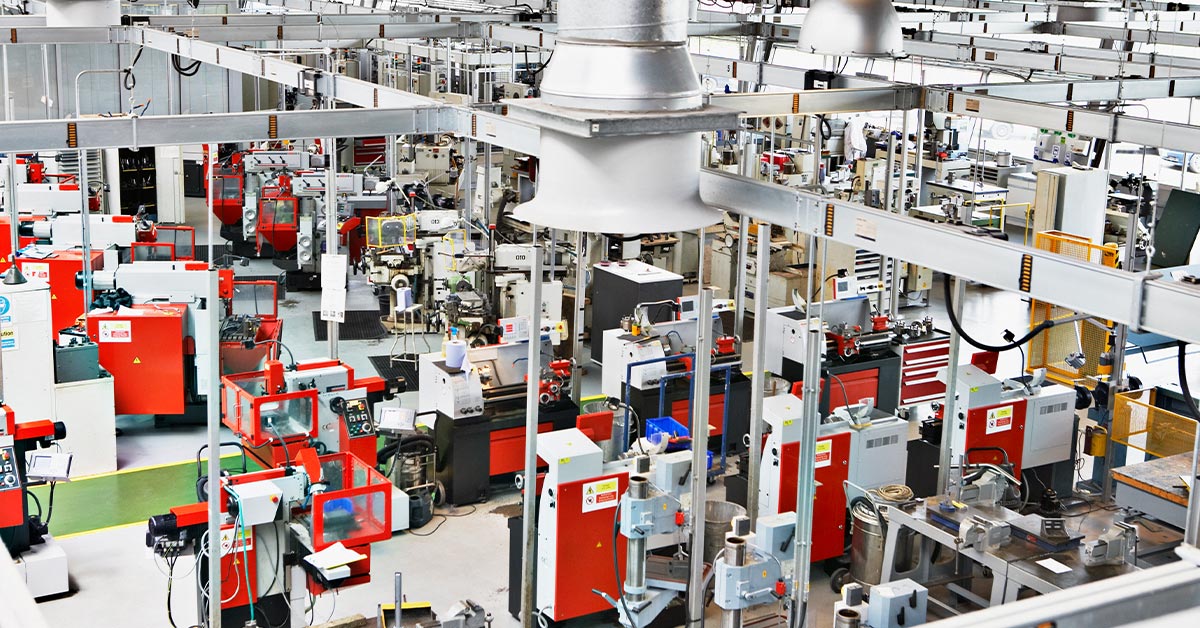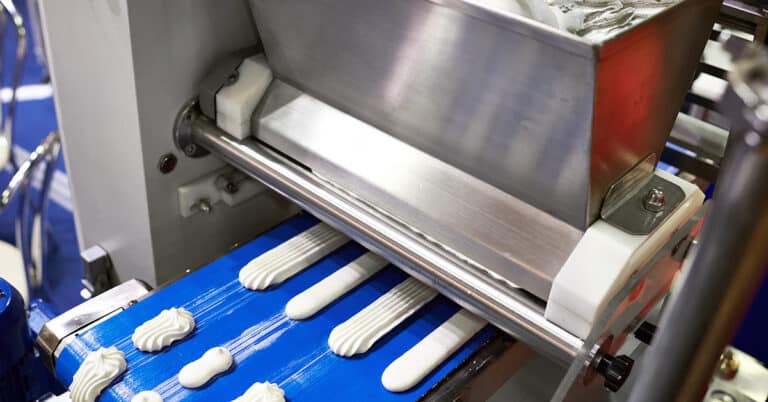Smart sensors in manufacturing will give operations and maintenance managers new tools for monitoring equipment health. These will open up opportunities to improve OEE and productivity while lowering costs. This blog provides an introduction to smart sensor technology, discusses how it forms part of the Industry 4.0 movement and provides guidance for readers wanting to learn more.
What are smart sensors?
Every physical property — mass, velocity, pressure, etc. — can be measured by a sensor. Regular sensors quantify and display the value in pounds, feet per second, psi or whatever is appropriate. More advanced sensors send the values to a control panel of some form. Depending on how fast the measured value can change and the nature of the application, this might be done periodically or continuously.
A smart sensor is a sensor that performs some filtering and analysis of the measured values and reports primarily by exception. This may mean sending an alert or message only when certain conditions are detected, such as when weight exceeds a limit, when something moves too quickly or too slowly, or when pressure is too high or too low. A smart sensor might also take factors such as event duration or time of day into account before sending an alert.
Performing these functions requires a small processor running some software, plus a means of outputting appropriate signals. This can be either wired or wireless. The most common wired communication systems are a form of Ethernet — Profibus is one well-known standard — although even RS232 would qualify. Wireless options include Wi-Fi and cellular service.
The emergence of smart sensors in Industry 4.0
Industry 4.0 is about the digital transformation of manufacturing. Having moved from steam to electrical power and then to computerization of production machinery, this latest transition centers around using data to optimize and improve manufacturing.
Industrial smart sensors form the foundation of the Industry 4.0 transition. They gather data, process it to identify trends and output signals that enable actions when needed. Their main uses are:
- Process optimization
- Variation reduction (part quality improvement)
- Machine condition monitoring
Much of the benefit of industrial smart sensors results from combination and analysis of the data being gathered. A computerized maintenance management system (CMMS) will use multiple signals to assess and monitor overall machine health. (This is in contrast to machine condition monitoring sensors that look at only a single point on the machine.)
Increasingly, artificial intelligence (AI) is being used to discern patterns and trends buried too deep in the data for humans to recognize. This allows managers and supervisors to schedule predictive maintenance, servicing and parts replacement just before failure, thus raising OEE.
Applications of smart sensors in manufacturing
Many types of industrial sensors can be “smart,” and they may be used singly or in combination.
Consider temperature measurement in a continuous furnace as an example of process optimization. The goal is to raise the temperature of parts passing through the furnace to a certain level, but the speed with which this happens is influenced by the mass on the conveyor. A smart thermal controller might adjust conveyor speed to ensure each part experiences the same temperature rise, regardless of how the belt is loaded.
Temperature is also an interesting variable for machine condition monitoring. Thermocouples, or increasingly, thermal imaging cameras, can be used to monitor specific components or areas of a machine, such as spindle bearings or motors. These become “smart” when equipped with processing power to detect problems and the ability to send signals or warnings. When temperatures move outside of optimal conditions, perhaps for a prolonged period, smart temperature monitors can notify the computerized maintenance management system to schedule an inspection or part replacement.
Another variable that can provide information on equipment health is power draw. Current sensors can measure how much electricity a motor or machine is using and share this information with an analysis package. The software learns when a machine is working and when it is idle and can identify abnormal operations that might indicate excess wear or overload conditions. Data of this type supports both OEE and productivity improvement efforts.
Smart sensors and the smart factory
The Industry 4.0 transition is taking us towards the era of the “smart factory.” Driven by smart factory sensors, this is where vast volumes of data will be analyzed faster and more thoroughly than humans could ever do. The resulting insights will be used to manage processes, identify trends and deliver dramatic improvements in productivity and efficiency.
In this environment, advanced process control reduces variation in the products, simultaneously driving down waste and customer complaints. In parallel, the ability to monitor machine health lets maintenance functions identify where attention will be needed and schedule the work to minimize disruption. This benefits production and maintenance by:
- Eliminating unplanned machine stoppages
- Raising OEE
- Improving delivery performance
- Raising productivity
- Driving down spare parts inventories
- Moving maintenance from firefighting to a predictive mode
- Reducing maintenance costs
A point to note is that “smart” is not synonymous with “lights out” and “automated.” While smart factory sensors undoubtedly facilitate unattended operation, their primary function is data capture and analysis. This will be used to make the factory or industrial plant a stable, predictable environment where variability is eliminated and plans are achieved every day.
Transform maintenance, transform production
A digital transformation is underway in manufacturing. Using smart sensors, Industry 4.0 thinking is to build on the advances made by computer control of processes and equipment to seek further optimization and continuous improvement.
A core element of this transition is to raise equipment availability to a point where unexpected stoppages, increased variability or slower-than-planned operations cease to be issues. Plant performance, as measured by OEE, will improve, with costs and waste falling. Perhaps of greatest value though is the solid foundation provided by reliable and copious data that will enable improvement without end.
ATS is a leader in helping manufacturers optimize, streamline and transform maintenance and reliability. Take the first step to finding out what we could do for you: Let’s Talk.






